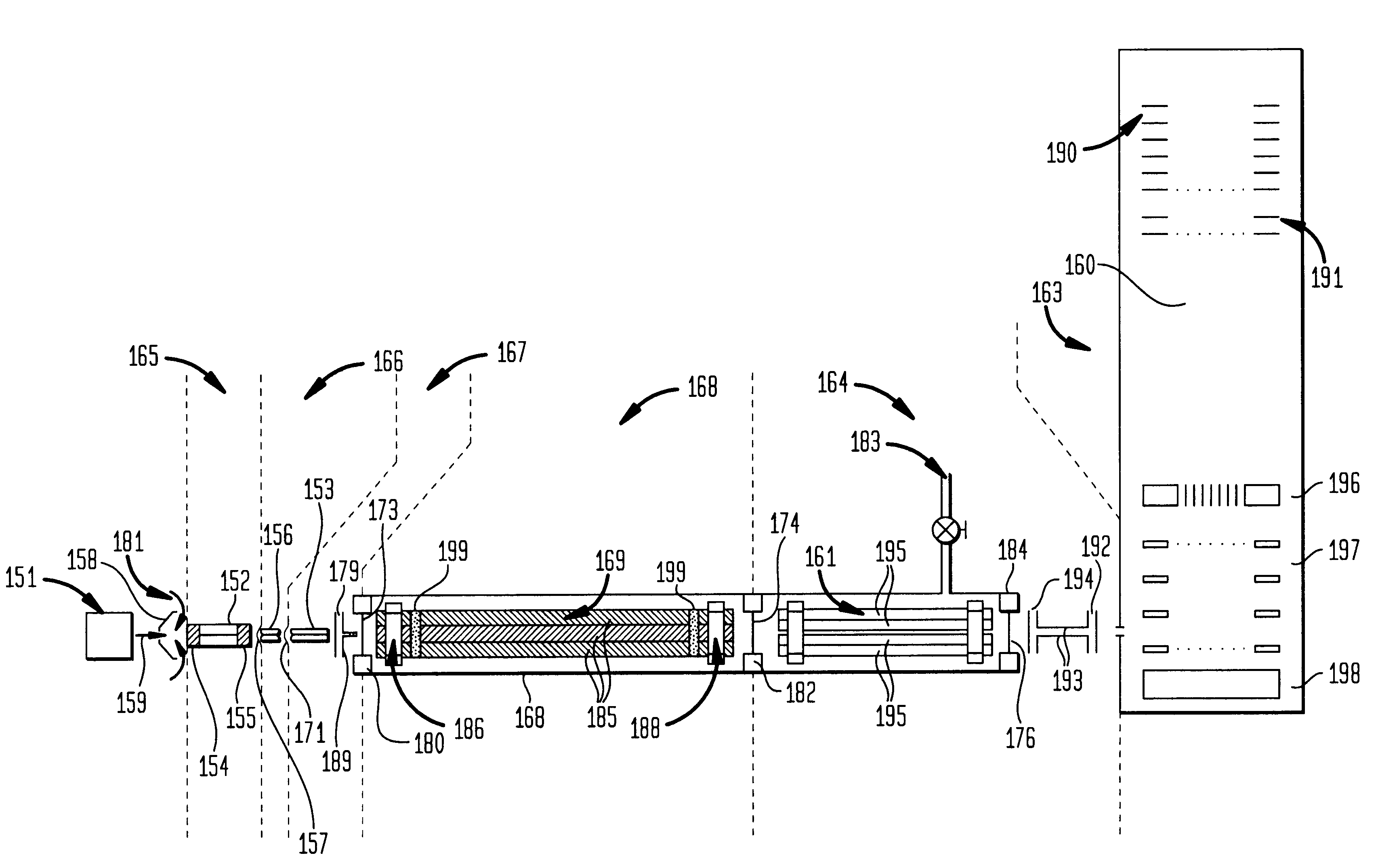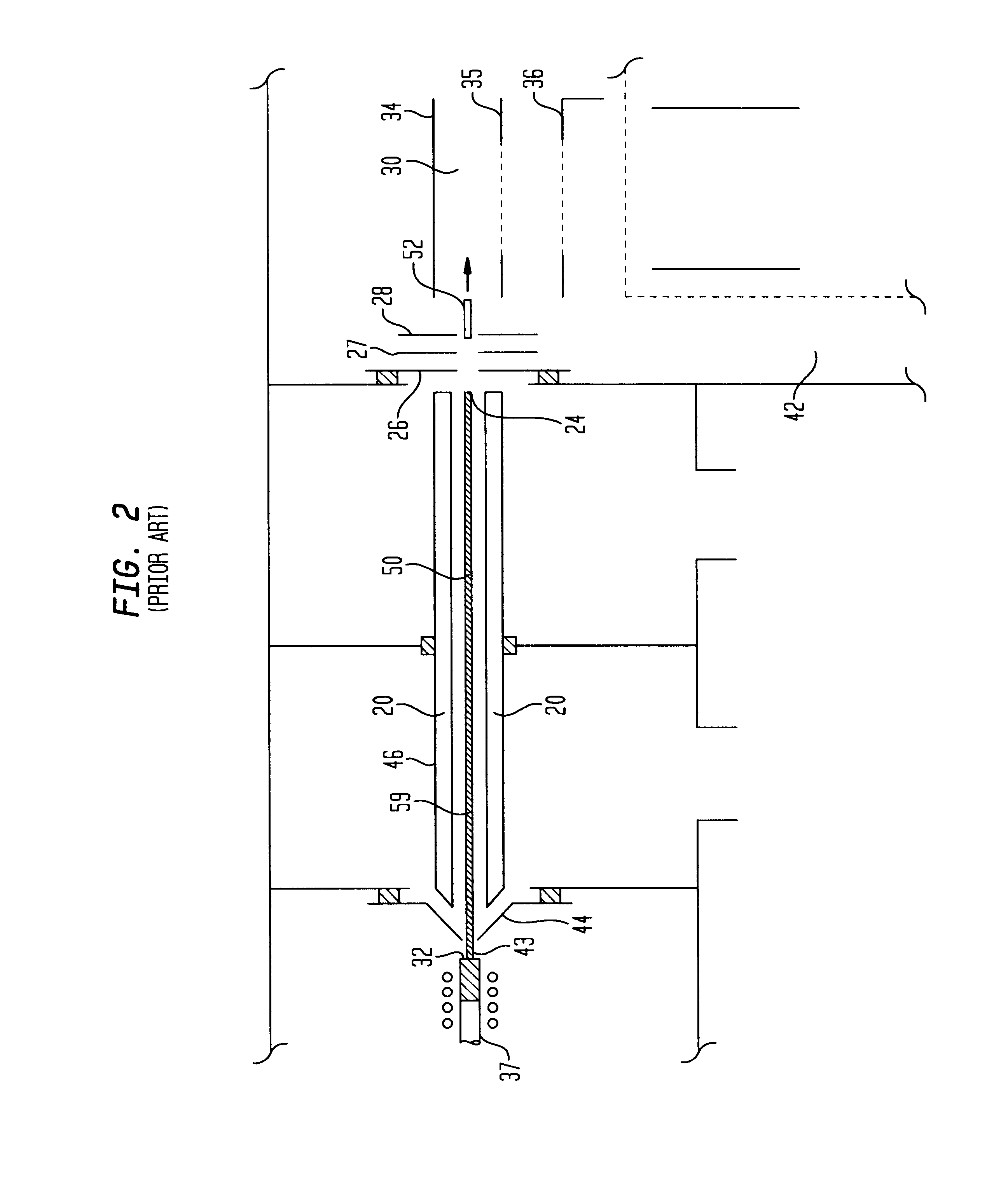Apparatus and method for analyzing samples in a dual ion trap mass spectrometer
a mass spectrometer and dual-ion trap technology, applied in mass spectrometers, separation processes, stability-of-path spectrometers, etc., can solve the problems of fragmentation of fragmented molecules, loss of information regarding the original composition of samples, and desorption of larger, more labile species
- Summary
- Abstract
- Description
- Claims
- Application Information
AI Technical Summary
Benefits of technology
Problems solved by technology
Method used
Image
Examples
example 1
Referring first to FIG. 9, shown is a mass spectrum of HP tune mix obtained using the preferred embodiment of the dual multipole ion trap time-of-flight mass spectrometer according to the present invention. The spectrum shown was obtained under the conditions described above and with the timing as shown and described with respect to FIG. 8. In obtaining this spectrum, the potential of electrode 179 was lowered to 0V for 200 usec to release ions from hexapole 153. Simultaneously, quadrupole 169 was turned "on" and kept on for about 1200 usec and electrode 174 was brought from 120 V (blocking potential) to -50 V and held there for 200 usec to allow ions to pass into quadrupole trap 161. Afterwards, electrode 176 was brought to from 35 V (blocking potential) to ground potential to allow ions to pass out of quadrupole trap 161 and into the TOF mass analyzer. Second gating electrode 176 was held open for about 99 ms. Approximately 75 usec after opening gating electrode 176, repeller / acce...
example 2
Turning next to FIG. 10, shown is a mass spectrum demonstrating the selection of the molecular ion of rescerpine and the subsequent time-of-flight mass analysis using a dual multipole trap time-of-flight mass spectrometer according to the present invention. The potentials applied and the timing of events were all the same as described above for EXAMPLE 1 except the RF potential applied between analyzer quadrupole rods 185 was 1144 Vpp, Also, a DC potential of 192 V was applied between analyzer quadrupole rods 185 so as to select ions of m / z=609 amu for transmission. Finally, the analyzer quadrupole 169 was maintained in an "on" state and electrode 174 in the "open" state for 900 usec instead of 1200 usec.
example 3
Referring now to FIG. 11, shown is a fragment ion spectrum obtained from rescerpine using the preferred embodiment of the dual multipole trap time of flight mass spectrometer according to the present invention. The conditions in EXAMPLE 2 with respect to FIG. 10 were maintained except that hexapole 153 was held at a DC level of 110 V and analyzer quadrupole 169 was held at a DC level of 95 V. The open and closed states of electrode 179 were changed to 80 V and 125 V, respectively. The open and closed states of electrode 174 were changed to 30 V and 200 V, respectively. The open and closed states of electrode 184 were changed to 0 V and 100 V, respectively. Finally, the analyzer quadrupole was maintained in an "on" state and electrode 174 in the "open" state for 900 usec instead of 200 usec.
PUM
 Login to View More
Login to View More Abstract
Description
Claims
Application Information
 Login to View More
Login to View More - R&D
- Intellectual Property
- Life Sciences
- Materials
- Tech Scout
- Unparalleled Data Quality
- Higher Quality Content
- 60% Fewer Hallucinations
Browse by: Latest US Patents, China's latest patents, Technical Efficacy Thesaurus, Application Domain, Technology Topic, Popular Technical Reports.
© 2025 PatSnap. All rights reserved.Legal|Privacy policy|Modern Slavery Act Transparency Statement|Sitemap|About US| Contact US: help@patsnap.com



